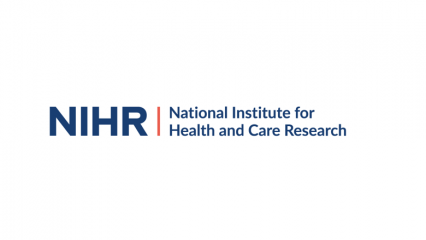Improving care for pregnant women at risk of pre-eclampsia through testing and remote monitoring
The COVID-19 pandemic has put significant pressure on all hospital services, including obstetrics, which provides antenatal care to pregnant women. One of the key priorities for secondary care has been to keep patients out of hospital wherever possible to minimise the risk of virus transmission.
Avoidance of face-to-face encounters poses significant challenges for antenatal services as many pregnant women receive vital care during these clinics. Supported by Health Innovation Manchester, work has been taking place to accelerate roll out of innovative testing and remote blood pressure monitoring for those at risk of pre-eclampsia during the COVID-19 pandemic.
In this blog, Professor Jenny Myers, Consultant Obstetrician at Saint Mary’s Hospital, part of Manchester University NHS Foundation Trust (MFT) and Professor of Obstetrics and Maternal Medicine at The University of Manchester, explains why pre-eclampsia care has been so important during the pandemic
Pre-eclampsia is, unfortunately, quite a common condition, affecting around 3 per cent of women, usually in the last three to four weeks of their pregnancy. Although most cases are mild, the condition can lead to serious complications if not monitored and treated. We can intervene by delivering the baby a few weeks early, and the outcomes in that situation for the mother and baby are generally very good.
However, one in three women who get pre-eclampsia will develop it earlier in the pregnancy and babies often need to be delivered premature, with mums also experiencing a higher risk of complications. The best way to reduce the risk of complications is to identify the disease early and set up additional monitoring and surveillance for those pregnancies.
By monitoring those at risk we can intervene at the right time for that pregnancy and keep the mum and baby as safe as possible.
Early signs of pre-eclampsia include high blood pressure (hypertension) and protein leaking into urine. These symptoms can be picked-up during routine antenatal appointments. However, these clinical signs can vary, and diagnosing a problem is based on arbitrary thresholds. In some cases, complications can develop before these thresholds are met or in between routine antenatal assessments.
This is why Placental Growth Factor (PlGF)-based testing is important. The PlGF-based testing allows us to make a biochemical diagnosis of pre-eclampsia, which is a much more accurate way to diagnose the condition. The test allows us to measure blood biomarkers linked to pre-eclampsia and placental function even before the woman presents with high blood pressure or protein in the urine. We can therefore make the diagnosis earlier and in a more accurate way.
It is thanks to pioneering research that we now have this approach to diagnosing pre-eclampsia and it’s important to recognise the work of researchers and the women who have taken part in studies and clinical evaluation.
PlGF-based testing has been recommended nationally by NHS England and by the Royal College of Obstetricians and Gynaecologists. It has been rolled out widely in Greater Manchester in the past 12 months, including during COVID-19, so more women and their babies can now benefit from the test.
During the pandemic we’ve also been doing everything we can to try and keep women out of hospital for their safety and to reduce the transmission of COVID-19. Our antenatal care is designed to screen women regularly for pre-eclampsia, with a blood pressure and urine check at every visit. For those who have raised or borderline blood pressure we would increase the number of times it is checked – in some cases this can mean two or three visits to hospital a week or an inpatient admission for blood pressure monitoring.
To continue monitoring those women at risk, we’ve introduced remote blood pressure monitoring, providing women with a blood pressure monitor and asking them to report it to us over the telephone. It means we’re able to triage their care while they stay safe at home and direct them to come into the hospital if required or remain monitoring at home, depending on the results.
Women have really embraced remote monitoring and have said they find it convenient and easy to do.
Many women are also reassured as they know they are being closely monitored and can speak to midwives over the telephone if they have any concerns.
At MFT, we’ve worked with Health Innovation Manchester and technology company Graphnet to digitise the process of home blood pressure monitoring into the MyMaternity app, which allows patients to record their results digitally via their smart phone and allows our midwives to review the readings in real time. It will hopefully make the process of home monitoring more efficient for busy women and busy midwives. We can also message women through the app to reassure them and give advice. The system has been codesigned with women themselves to make it easy to use and will hopefully maximise the time that midwives can spend caring for the mums.
Remote blood pressure monitoring, combined with the improved accuracy of diagnosing pre-eclampsia with the PlGF-based test, is meaning we’re seeing fewer women in our face-to-face clinics and fewer women admitted to hospital during the pandemic. It means a reduced risk of exposure to COVID-19 but also means we can target care for those in the most need.
This blog originally appeared on the Health Innovation Manchester website.




